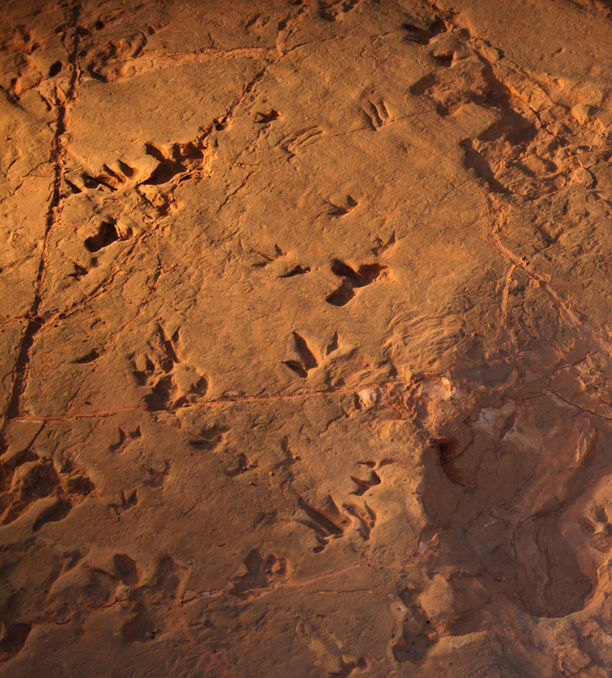Hours added to running of the dinosaurs
 High-tech imaging has revealed new complexity in a Queensland fossil site once thought to be caused by a massive stampede.
High-tech imaging has revealed new complexity in a Queensland fossil site once thought to be caused by a massive stampede.
It turns out not all the dinosaur footprints in Central Queensland’s Lark Quarry were caused by rampaging reptiles, as previously thought.
University of Queensland palaeontologists have used 3D modelling of the large set of footprints to show they were made by a plant-eating dinosaur and not a meat-eater, and had occurred before the tracks from the ‘stampede’ were made.
The Lark Quarry is famous among palaeontologists for preserving the footprints of a carnivorous dinosaur approaching a mixed herd of chicken- and turkey-sized dinosaurs, causing them to stampede.
The ancient ambush happened about 93 million years ago.
But advanced digital maps suggest this may not have been exactly what happened.
“All these dinosaurs were on the move, but rather than all being present during one event, the footprints were made in a series of separate events across several hours or even days,” said UQ School of Biological Sciences PhD graduate Dr Anthony Romilio.
“Our results show that the large dinosaur was a herbivore that crossed the area shortly before the site was covered in shallow water, while the smaller tracks occurred hours to days later.
“We also know from our previous research that some of these smaller dinosaurs were swimming.”
The researchers used a technique known as photogrammetry to digitally map each of the largest footprints in 3D.
UQ’s Dr Steve Salisbury says what actually happened at Lark Quarry might be far more interesting than the stampede theory.
“It’s definitely not a moment frozen in time, as previously believed,” Dr Salisbury said.
“By mapping pressure bulges from the large footprints, drag marks from vegetation and the small footprints dotted onto these marks, we have been able to recreate a sequence of events that took place over a period ranging from several hours to several days.”
Lark Quarry is known as the Dinosaur Stampede National Monument and has more than 3000 dinosaur footprints.
The latest findings are published online in Cretaceous Research.








 Print
Print